Dipika Rajesh
Amorphous Fortress Online: Collaboratively Designing Open-Ended Multi-Agent AI and Game Environments
Feb 08, 2025



Abstract:This work introduces Amorphous Fortress Online -- a web-based platform where users can design petri-dish-like environments and games consisting of multi-agent AI characters. Users can play, create, and share artificial life and game environments made up of microscopic but transparent finite-state machine agents that interact with each other. The website features multiple interactive editors and accessible settings to view the multi-agent interactions directly from the browser. This system serves to provide a database of thematically diverse AI and game environments that use the emergent behaviors of simple AI agents.
Quality Diversity in the Amorphous Fortress (QD-AF): Evolving for Complexity in 0-Player Games
Dec 04, 2023



Abstract:We explore the generation of diverse environments using the Amorphous Fortress (AF) simulation framework. AF defines a set of Finite State Machine (FSM) nodes and edges that can be recombined to control the behavior of agents in the `fortress' grid-world. The behaviors and conditions of the agents within the framework are designed to capture the common building blocks of multi-agent artificial life and reinforcement learning environments. Using quality diversity evolutionary search, we generate diverse sets of environments. These environments exhibit certain types of complexity according to measures of agents' FSM architectures and activations, and collective behaviors. Our approach, Quality Diversity in Amorphous Fortress (QD-AF) generates families of 0-player games akin to simplistic ecological models, and we identify the emergence of both competitive and co-operative multi-agent and multi-species survival dynamics. We argue that these generated worlds can collectively serve as training and testing grounds for learning algorithms.
The Five-Dollar Model: Generating Game Maps and Sprites from Sentence Embeddings
Aug 08, 2023



Abstract:The five-dollar model is a lightweight text-to-image generative architecture that generates low dimensional images from an encoded text prompt. This model can successfully generate accurate and aesthetically pleasing content in low dimensional domains, with limited amounts of training data. Despite the small size of both the model and datasets, the generated images are still able to maintain the encoded semantic meaning of the textual prompt. We apply this model to three small datasets: pixel art video game maps, video game sprite images, and down-scaled emoji images and apply novel augmentation strategies to improve the performance of our model on these limited datasets. We evaluate our models performance using cosine similarity score between text-image pairs generated by the CLIP VIT-B/32 model.
Amorphous Fortress: Observing Emergent Behavior in Multi-Agent FSMs
Jun 22, 2023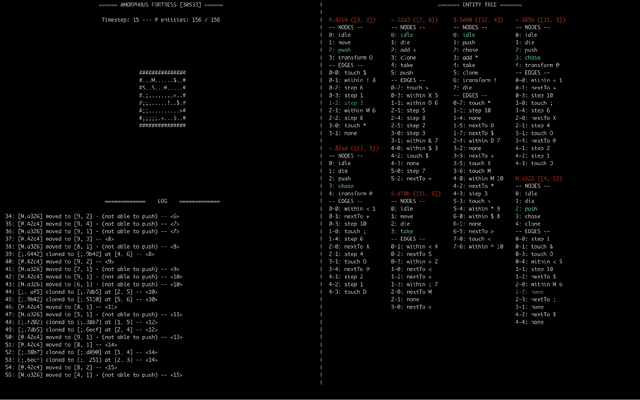
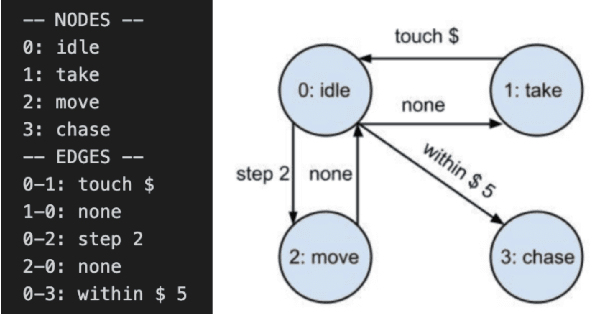
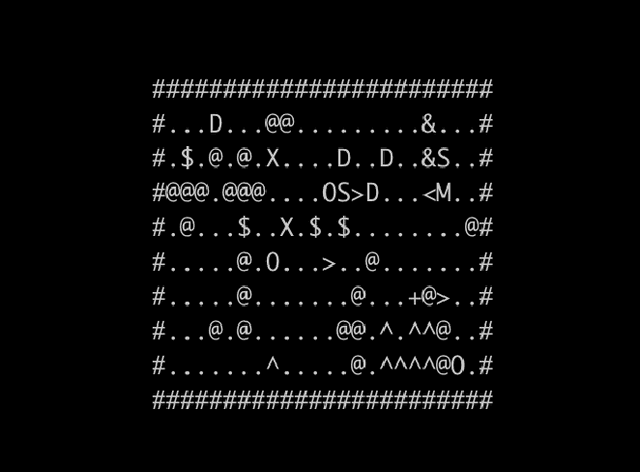

Abstract:We introduce a system called Amorphous Fortress -- an abstract, yet spatial, open-ended artificial life simulation. In this environment, the agents are represented as finite-state machines (FSMs) which allow for multi-agent interaction within a constrained space. These agents are created by randomly generating and evolving the FSMs; sampling from pre-defined states and transitions. This environment was designed to explore the emergent AI behaviors found implicitly in simulation games such as Dwarf Fortress or The Sims. We apply the hill-climber evolutionary search algorithm to this environment to explore the various levels of depth and interaction from the generated FSMs.
Exploring open-ended gameplay features with Micro RollerCoaster Tycoon
May 10, 2021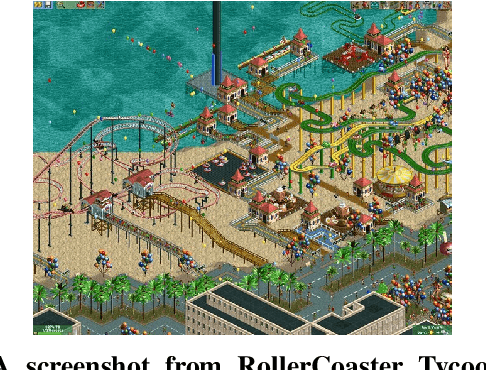
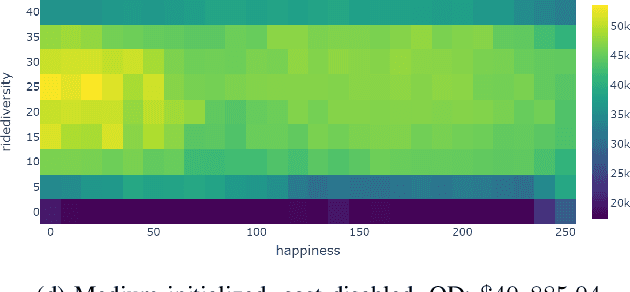
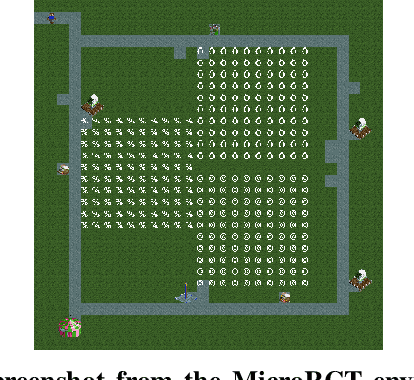
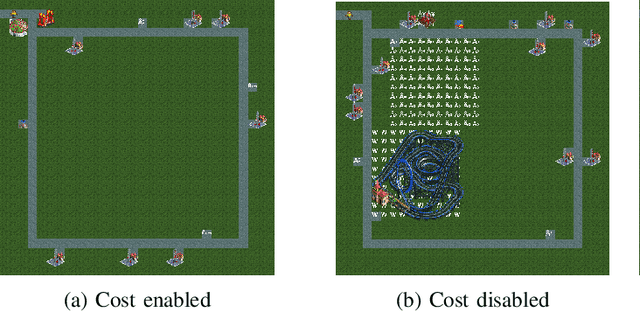
Abstract:This paper introduces MicroRCT, a novel open source simulator inspired by the theme park sandbox game RollerCoaster Tycoon. The goal in MicroRCT is to place rides and shops in an amusement park to maximize profit earned from park guests. Thus, the challenges for game AI include both selecting high-earning attractions and placing them in locations that are convenient to guests. In this paper, the MAP-Elites algorithm is used to generate a diversity of park layouts, exploring two theoretical questions about evolutionary algorithms and game design: 1) Is there a benefit to starting from a minimal starting point for evolution and complexifying incrementally? and 2) What are the effects of resource limitations on creativity and optimization? Results indicate that building from scratch with no costs results in the widest diversity of high-performing designs.
Say "Sul Sul!" to SimSim, A Sims-Inspired Platform for Sandbox Game AI
Aug 25, 2020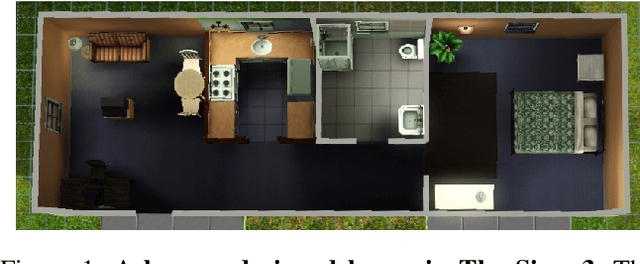
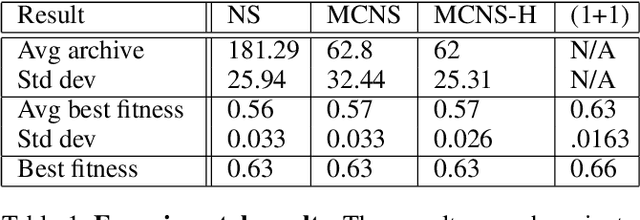
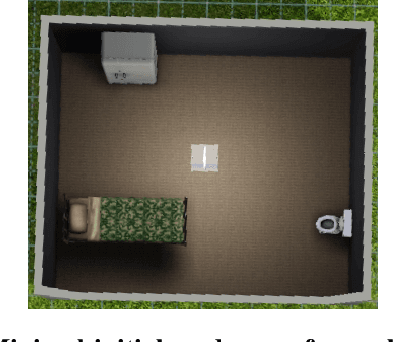

Abstract:This paper proposes environment design in the life simulation game The Sims as a novel platform and challenge for testing divergent search algorithms. In this domain, which includes a minimal viability criterion, the goal is to furnish a house with objects that satisfy the physical needs of a simulated agent. Importantly, the large number of objects available to the player (whether human or automated) affords a wide variety of solutions to the underlying design problem. Empirical studies in a novel open source simulator called SimSim investigate the ability of novelty-based evolutionary algorithms to effectively generate viable environment designs.
 Add to Chrome
Add to Chrome Add to Firefox
Add to Firefox Add to Edge
Add to Edge